Egg drop soup is enjoyed around the world, but the Japanese version, called Kakitamajiru, stands out for its distinctive flavor, which comes from dashi broth. Experience this delicate, flavorful soup, made from the harmonious combination of eggs and dashi.

Jump to:
What is Kakitamajiru?
Kakitamajiru is a traditional Japanese soup made by thickening seasoned dashi broth with starch and adding beaten eggs. "Kaki" means to stir, "tama" is short for "tamago," which means egg, and "jiru" refers to soup. Adding beaten eggs at the end of the cooking process gives the soup a fluffy texture as they blend in.
While many people might associate Japanese soups with miso soup, learning how to make this dish will expand your repertoire of Japanese soups. The combination of eggs and dashi pairs perfectly, resulting in a delicious flavor. If you love Japanese flavors, you will definitely enjoy this soup.
The umami synergy of eggs and bonito dashi
There is a commonly used type of dashi for making kakitamajiru: bonito dashi.
Bonito dashi contains an umami component called inosinic acid, while eggs, the primary ingredient in this soup, contain another umami component known as glutamic acid. These umami components are delicious on their own, but combining two (or more) different umami components is known to enhance their flavors and make them even more delicious through a synergistic effect. In other words, eggs and bonito dashi complement each other perfectly.
As a side note, the combination of eggs and bonito dashi is a classic pairing that appears in various Japanese dishes, such as Chawanmushi (savory egg custard), Dashimaki Tamago (rolled omelet with dashi), and Tamago-Toji Udon (egg drop udon noodle soup). Once you try it, you will be captivated by its comforting flavor—so be sure to give it a try with this recipe.
The recipe includes instructions on how to make bonito dashi, but if you would like to learn more, please refer to the linked page.
Ingredient variations
This dish is a simple soup that highlights the delicate flavors of eggs and dashi stock. Traditionally, it is topped with just mitsuba (Japanese parsley) or green onions (scallions).
That said, you can also customize it with a variety of other ingredients. A heartier version makes for a more nutritious meal, and in modern Japan, it is also common to add ingredients such as chicken, carrots, onions, spinach, tofu, kamaboko (fish cake), shiitake mushrooms, enoki mushrooms, or wakame seaweed.
My recipe follows the traditional version, but feel free to enjoy it with other ingredients according to your preferences.

📋Step-by-step recipe
Ingredients
- 1 egg
- 4 mitsuba (Japanese parsley)
- ½ tsp salt
- 1 tsp light soy sauce (You can substitute it with regular soy sauce; the main difference is the color.)
- ½ Tbsp potato starch or corn starch
- ½ Tbsp water (for the starch)
Bonito dashi:
- 2 cups water
- ½ cup bonito flakes (katsuobushi)
Instructions
🕒 Total: 10 minsIf you already have bonito dashi, start from step 3. In that case, use 1 ⅔ cups (400 ml) of your dashi for 2 servings.
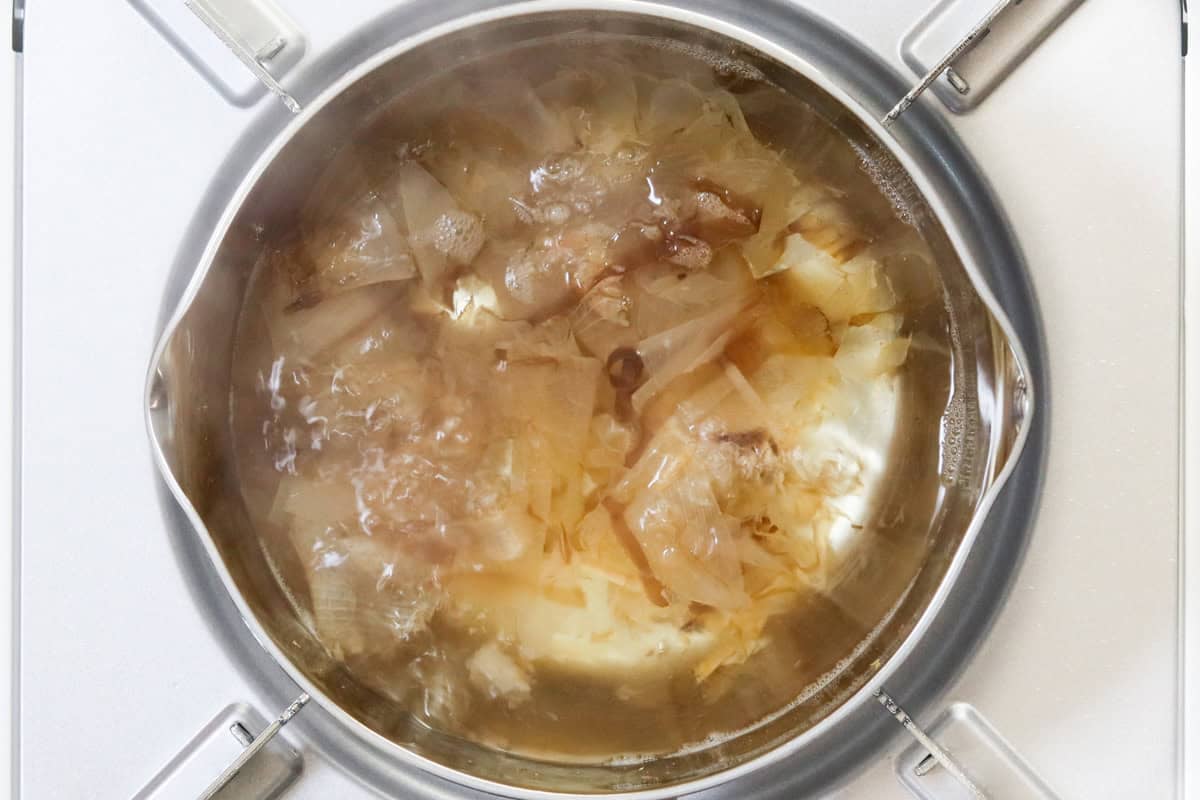
Step 1
Put water in a pot and bring it to a boil. Once boiling, reduce the heat to low, add bonito flakes, and let it simmer for 3 minutes.
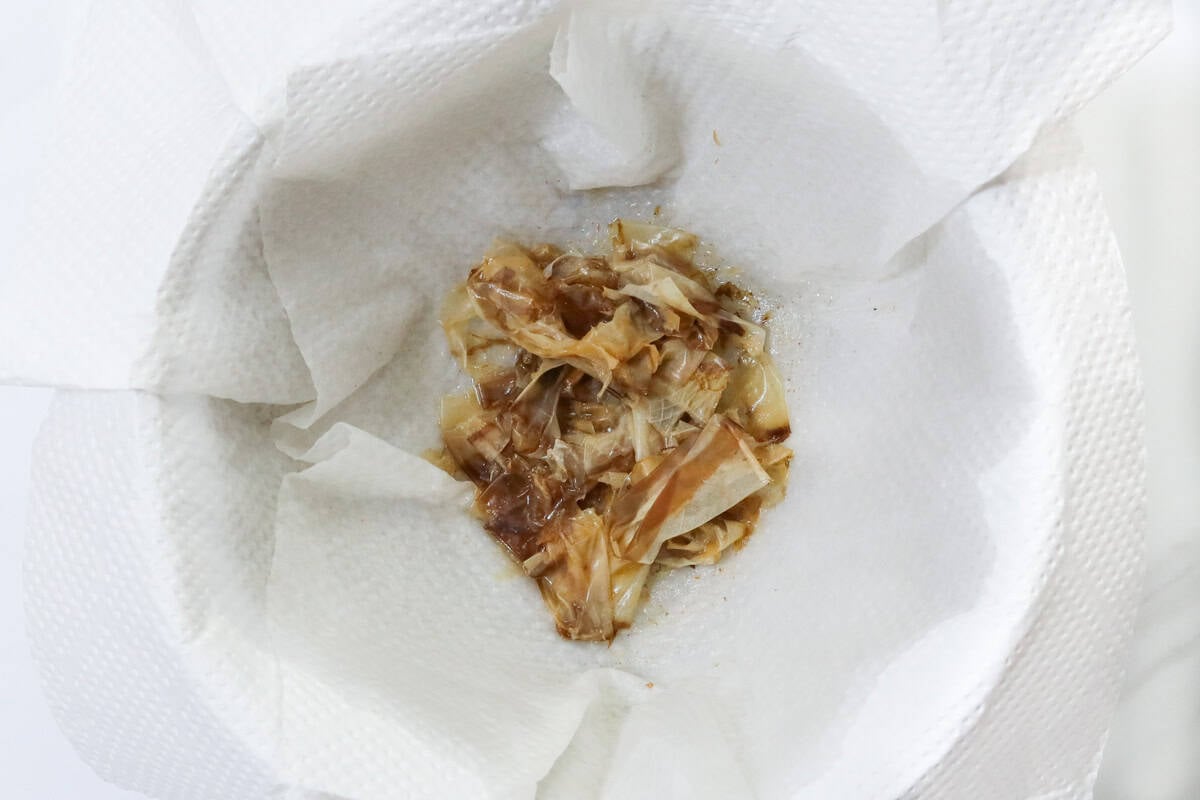
Step 2
Turn off the heat and strain the mixture through a sieve lined with paper towels or a cloth (such as cheesecloth). Alternatively, if you don't mind a few fine bonito flakes remaining, you can simply use a fine-mesh strainer. Bonito dashi is now ready.
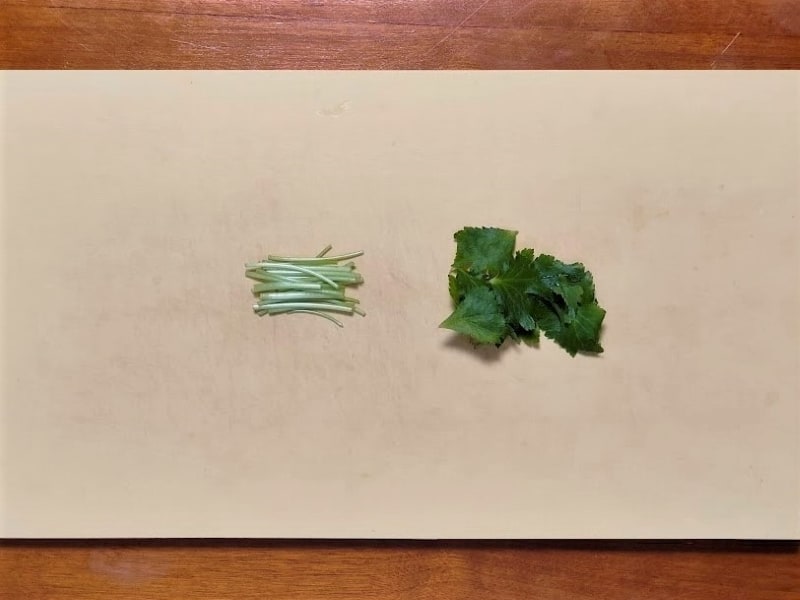
Step 3
Crack the egg into a small bowl and beat it. Trim the base of the mitsuba, separate the leaves, and cut the stems into ¾-inch (2 cm) pieces.
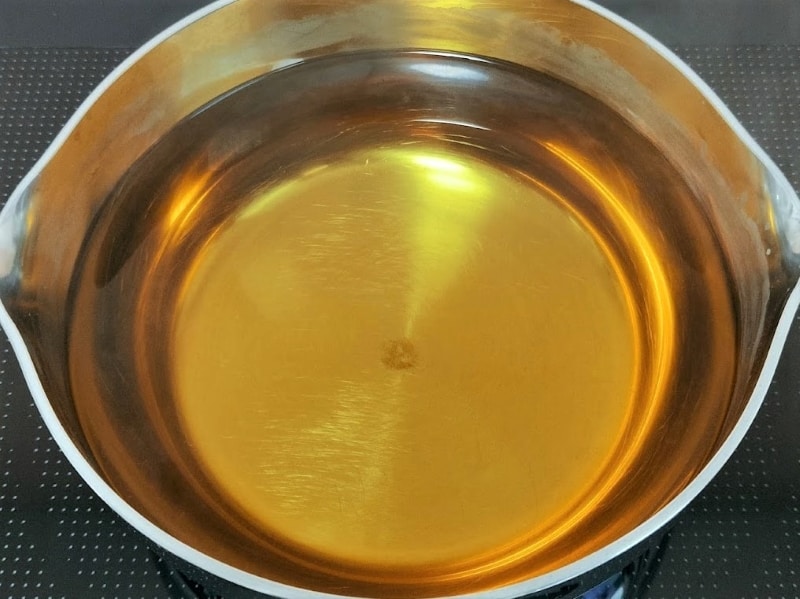
Step 4
Return the bonito dashi to the pot and bring it to a boil. Once boiling, reduce the heat to low, and add salt and light soy sauce.
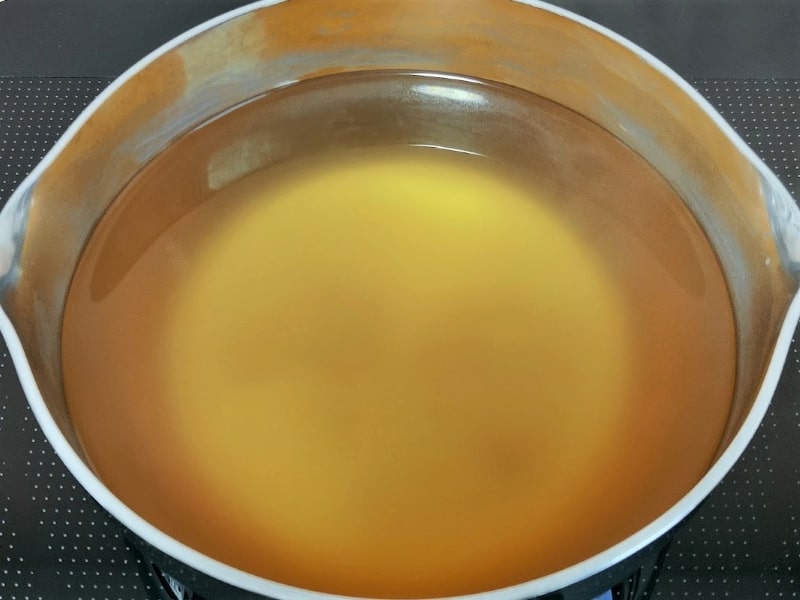
Step 5
In a small bowl, mix the starch with water until smooth, then gradually add it to the pot while stirring constantly to thicken and avoid lumps. Continue simmering for about 20 seconds to eliminate any powdery taste.
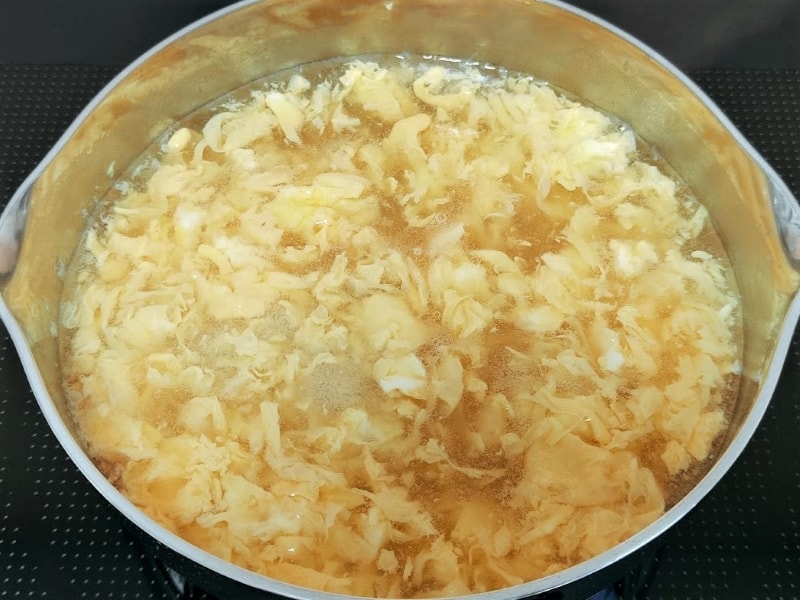
Step 6
Gradually drizzle the beaten egg into the pot, distributing it evenly. Once the egg has set, gently stir it.
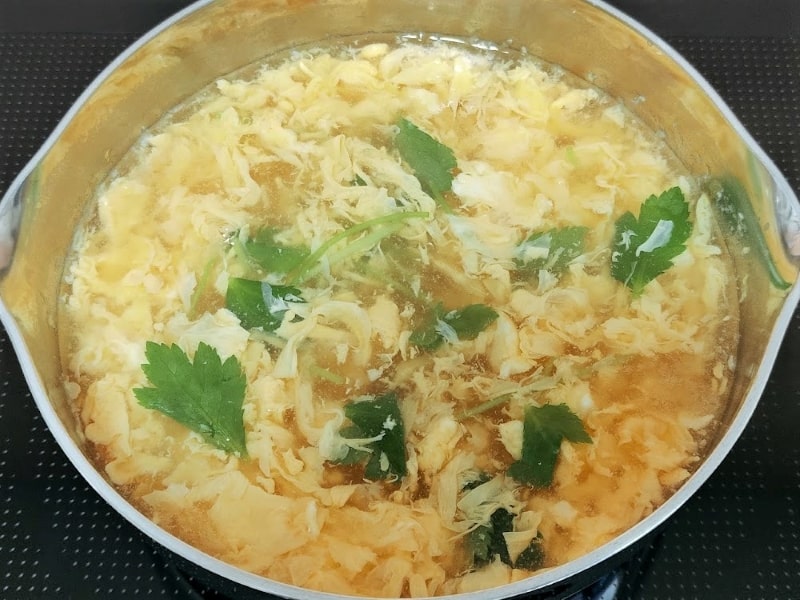
Step 7
Remove from the heat and add the mitsuba leaves and stems.
To store
You can store it in the refrigerator for up to 2 days.
Cooking tips
- The beaten egg should be drizzled gradually and evenly into the pot. This helps prevent the egg from clumping and creates a light, fluffy texture.
- After drizzling the beaten egg into the pot, make sure it sets before stirring. Stirring before the egg is fully set can make the udon soup cloudy.
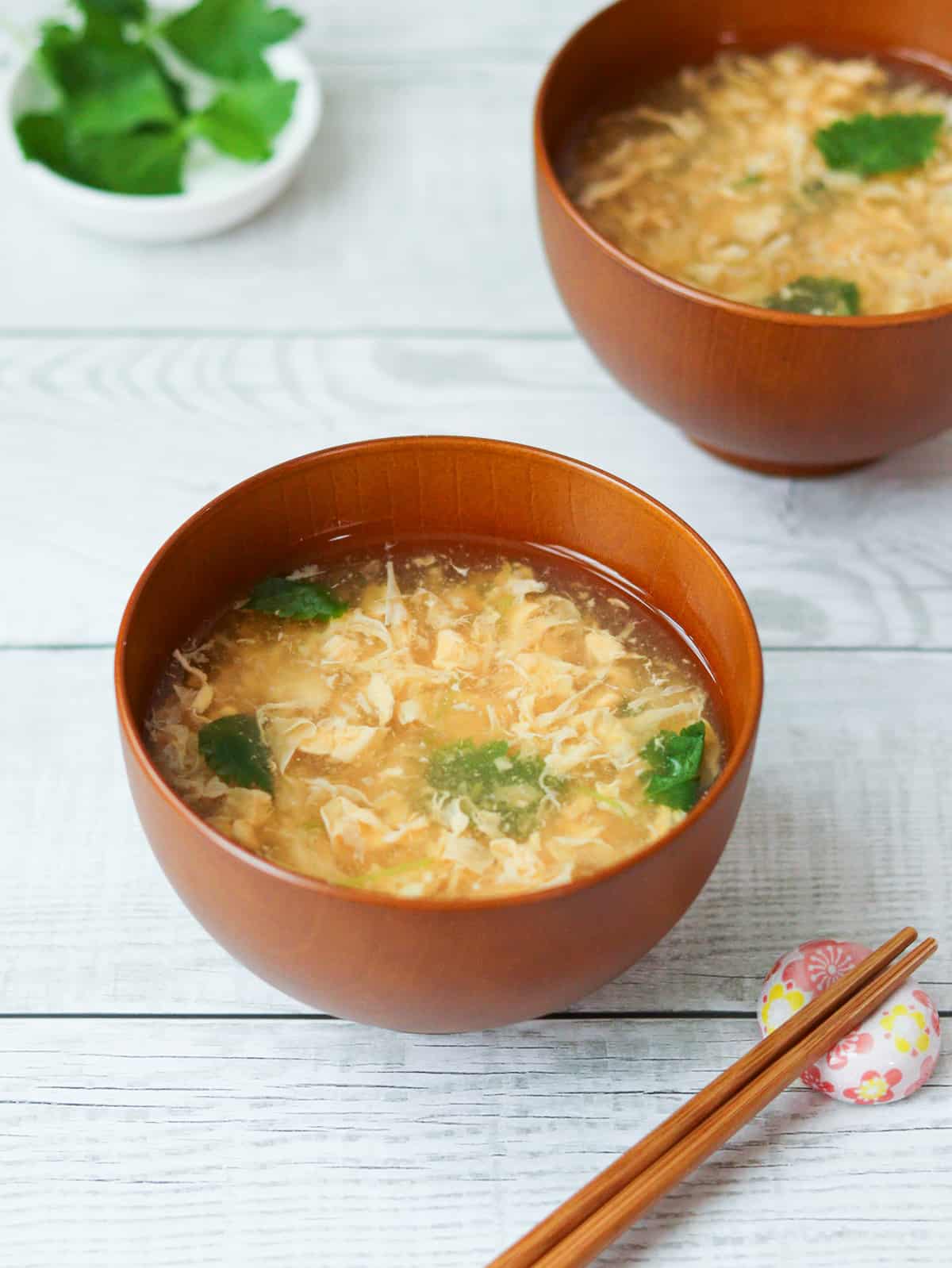
If you try this recipe, I’d love to hear what you think. Please consider leaving a review and star rating in the comments below. If you enjoyed it, I’d really appreciate it if you shared it with your friends.
More traditional Japanese soup recipes you'll love
Recipe card

Kakitamajiru (Japanese Egg Drop Soup)
Ingredients
- 1 egg
- 4 mitsuba (Japanese parsley)
- ½ tsp salt
- 1 tsp light soy sauce (You can substitute it with regular soy sauce; the main difference is the color.)
- ½ Tbsp potato starch or corn starch
- ½ Tbsp water (for the starch)
Bonito dashi:
- 2 cups water
- ½ cup bonito flakes (katsuobushi)
Instructions
- Put water in a pot and bring it to a boil. Once boiling, reduce the heat to low, add bonito flakes, and let it simmer for 3 minutes.
- Turn off the heat and strain the mixture through a sieve lined with paper towels or a cloth (such as cheesecloth). Alternatively, if you don't mind a few fine bonito flakes remaining, you can simply use a fine-mesh strainer. Bonito dashi is now ready.
- Crack the egg into a small bowl and beat it. Trim the base of the mitsuba, separate the leaves, and cut the stems into ¾-inch (2 cm) pieces.
- Return the bonito dashi to the pot and bring it to a boil. Once boiling, reduce the heat to low, and add salt and light soy sauce.
- In a small bowl, mix the starch with water until smooth, then gradually add it to the pot while stirring constantly to thicken and avoid lumps. Continue simmering for about 20 seconds to eliminate any powdery taste.
- Gradually drizzle the beaten egg into the pot, distributing it evenly. Once the egg has set, gently stir it.
- Remove from the heat and add the mitsuba leaves and stems.
Notes
- If you already have bonito dashi, start from step 3. In that case, use 1 ⅔ cups (400 ml) of your dashi for 2 servings.
- You can store it in the refrigerator for up to 2 days.

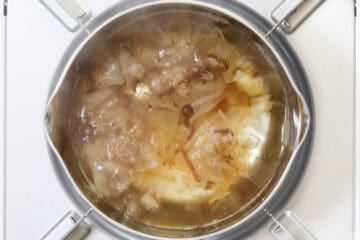
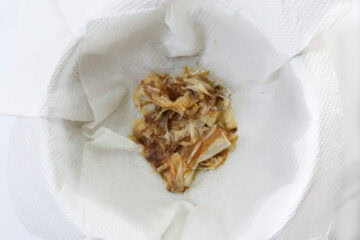
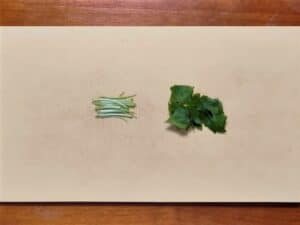
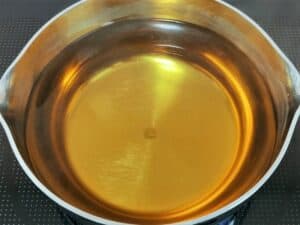
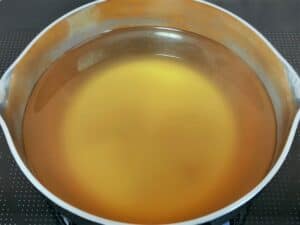
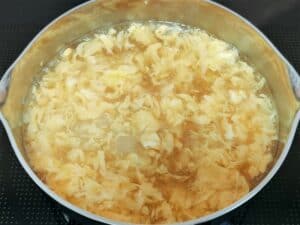
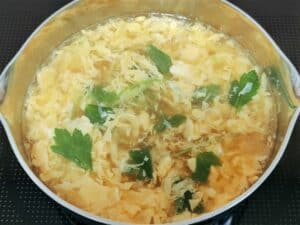
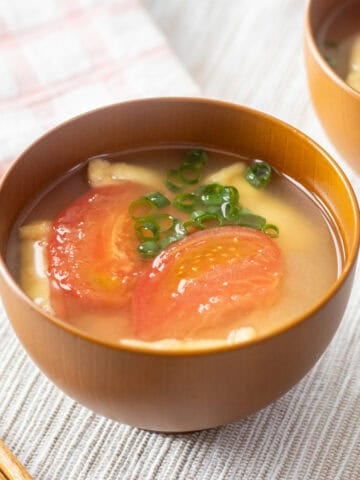
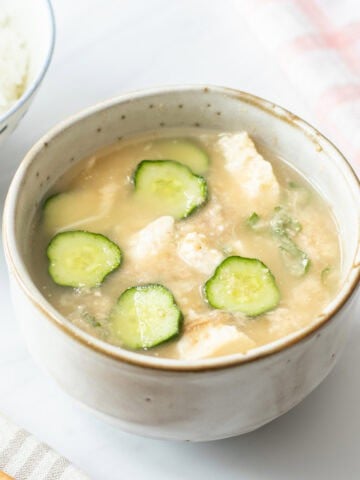
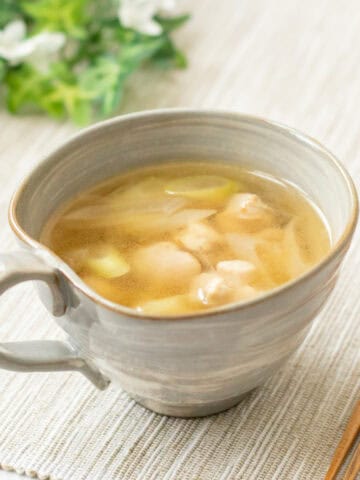

Leave a Rating and a Comment